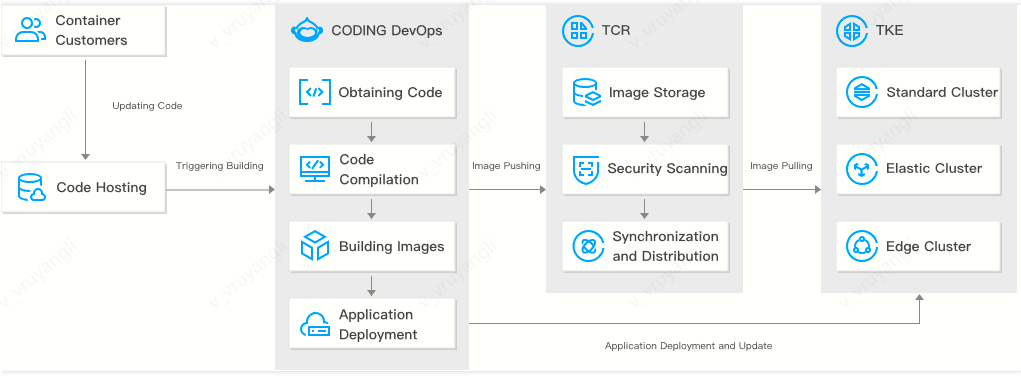应用场景
最后更新时间:2024-12-02 14:51:38
全球镜像托管分发
当自身业务拓展至全国,乃至全球多个地域,企业级容器用户需要全球多个地域能够就近拉取镜像。一方面就近有利于提升拉取速度,保障业务极速部署上线。另一方面也可以通过同地域内网传输数据,节省公网带宽成本。
容器镜像服务支持在全球多个地域使用共享实例和企业版独享实例。其中,企业版实例支持基于规则的自动实例同步,可快速将新推送的容器镜像同步至其他地域的实例内,进而实现就近拉取镜像,降低手动推送镜像至多个地域的运维成本和风险。


大规模镜像分发
随着自身容器业务规模不断扩大或将现有大规模业务迁移至容器环境,企业级用户的容器集群中节点数也在不断增长,部分集群节点数超过上千个。同时,随着深度学习、基因计算等业务场景的兴起,容器集群开始承载大量的离线计算业务,而此类业务的容器镜像大多为 GB 级大小。
针对大规模集群并发拉取 GB 级大镜像,容器镜像服务企业版具有容器化部署的服务后端和独享的存储后端(对象存储 COS 存储桶),可稳定应对高并发的 Docker 客户端拉取请求。同时,容器镜像服务支持 P2P 镜像分发,用户只需在容器服务 TKE 中启用该功能,即可利用 P2P 加速分发技术加速镜像的拉取,保障业务的极速部署。


容器化持续部署
企业级用户完成大规模容器上云后,传统的业务应用开发及部署流程面临挑战,开始转向云原生 DevOps 方案。容器镜像服务与容器服务 TKE、CODING DevOps 紧密结合,为企业级用户在腾讯云上提供一体化云原生 DevOps 解决方案。用户只需通过容器镜像服务控制台创建交付工作流,即可实现源代码更新自动触发镜像构建、安全扫描,进而同步至全球多个生产地域的实例内,最后自动更新容器集群内的业务应用。针对已自建完整 CI/CD 工作流的企业级客户,容器镜像服务也支持配置自定义触发器,可实现与自建的持续交付系统的对接,将容器镜像服务平滑纳入现有的业务开发流程中。


文档反馈

